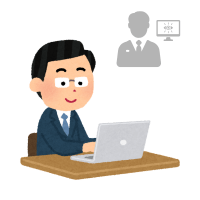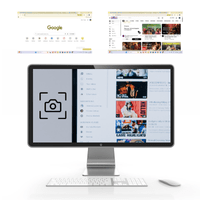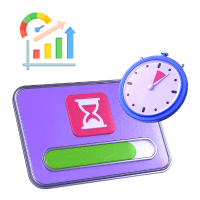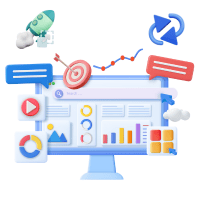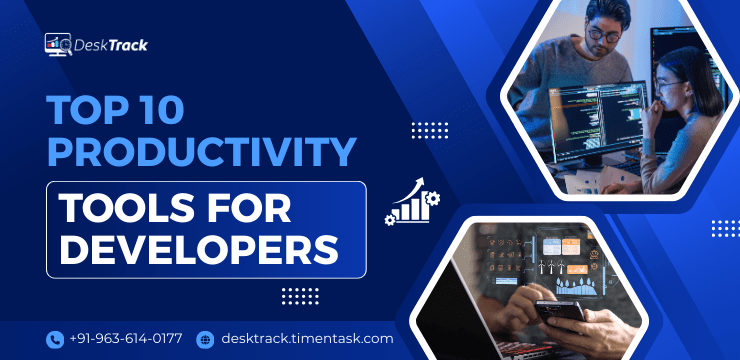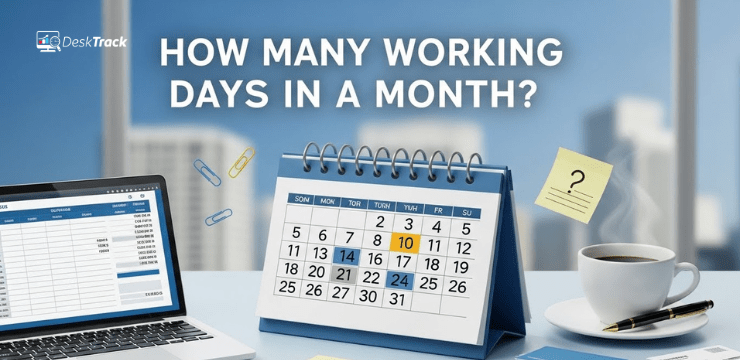
In the modern workplace, employee monitoring software has become an increasingly common tool for businesses looking to manage productivity, ensure security, and enhance performance—especially in remote and hybrid work settings. However, the rise of this technology has raised concerns among employees, with many questioning whether these tools invade their privacy. The debate centers around the balance between accountability and personal boundaries.
Employee monitoring software can collect vast amounts of data, such as time tracking, app usage, and even real-time screen activity. While some argue that this infringes on employees’ rights, others believe it’s a necessary step in maintaining an efficient and secure workplace. This article will explore the myths surrounding employee monitoring, helping both employers and employees understand the truth behind these tools. Let’s break down the most common misconceptions and see how employee monitoring can be both ethical and effective when used correctly.
Debunking Common Myths About Employee Monitoring Software
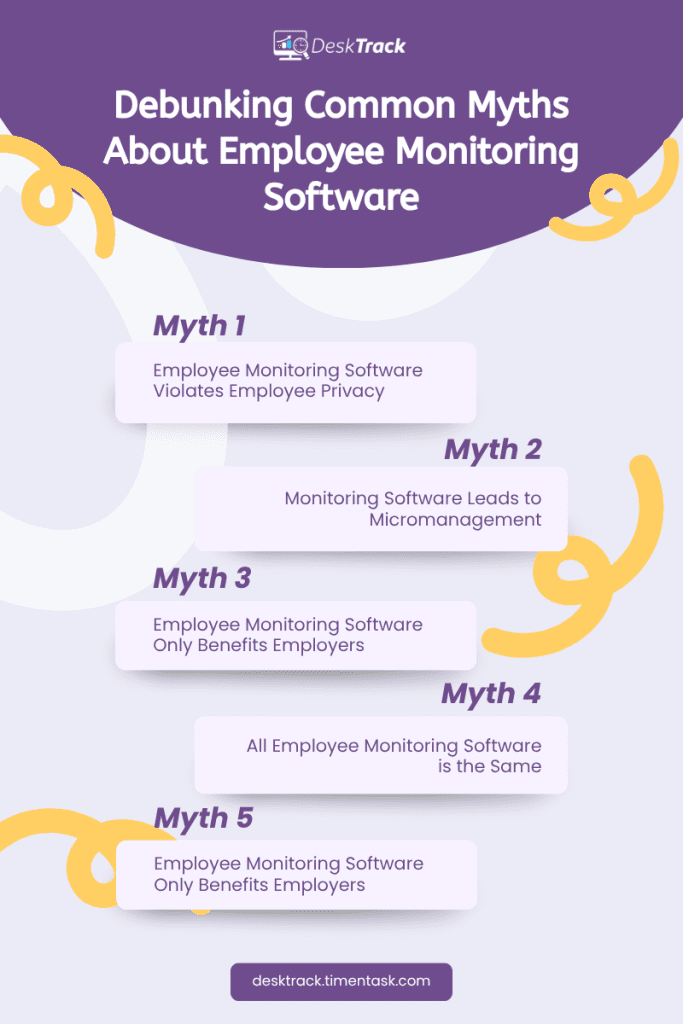
As remote and hybrid work environments continue to grow, employee monitoring software has become an essential tool for businesses to track productivity, ensure security, and improve team performance. However, with this rise in usage comes a range of misconceptions about the software’s role, particularly when it comes to employee privacy. Many assume that these tools are invasive, unfair, or only serve the interests of the employer.
In this section, we’ll explore and debunk some of the most common myths surrounding employee monitoring software. Understanding these myths will not only clarify any concerns employees and employers might have but will also provide insight into how these tools can be used responsibly to benefit both parties. Let’s dive into the facts and clear up the confusion!
1. Myth 1: Employee Monitoring Software Violates Employee Privacy
The Difference Between Monitoring for Productivity and Privacy Invasion
One of the most common misconceptions about employee monitoring software is that it violates employees’ privacy. While it’s true that these tools track employee activity, the primary purpose is to monitor work-related tasks and not personal data. Most software focuses on capturing time spent on projects, specific applications used, or task progress. It doesn’t gather sensitive or personal information unless explicitly designed to do so.
In many cases, businesses are legally required to inform employees about monitoring practices. Transparent communication ensures that employees are aware of the data being collected and how it’s being used. When implemented responsibly, monitoring software provides valuable insights that help both employers and employees perform better without breaching privacy.
How Monitoring Tools Respect Privacy Boundaries
Modern employee monitoring tools prioritize privacy by allowing companies to choose which activities to track. For example, many tools offer options to exclude personal activities, focusing only on work-related tasks. Employers can configure these tools to track productivity metrics without capturing sensitive information, such as personal emails or social media activity.
By adhering to these principles, employee monitoring software strikes a balance between maintaining productivity and respecting personal boundaries. Employers should ensure they are using monitoring tools ethically, respecting both privacy laws and the trust of their employees.
2. Myth 2: Monitoring Software Leads to Micromanagement
What is Micromanagement?
Micromanagement is often associated with excessive control and an overbearing presence in an employee’s daily tasks. The fear is that monitoring software encourages employers to excessively oversee and control every aspect of an employee’s workday. This can lead to resentment and a lack of trust between employers and employees.
How Monitoring Software Helps with Performance, Not Over-Management
While it may seem like monitoring software could lead to micromanagement, the opposite is true when used correctly. These tools provide real-time data that help managers focus on specific performance trends, such as task completion rates, time management, and areas where employees may need additional support. Rather than constantly hovering over employees, managers can use the data to offer constructive feedback and support.
When used properly, employee monitoring software can empower employees to take ownership of their tasks, improve their skills, and work more efficiently without feeling watched or controlled.
The Role of Autonomy and Trust in a Productive Work Environment
It’s important to understand that monitoring software doesn’t have to be a tool for micromanaging—it can be a tool for autonomy. By giving employees clear, measurable goals and real-time feedback, monitoring software creates an environment of trust where employees feel supported rather than controlled.
3. Myth 3: Employee Monitoring Software Only Benefits Employers
How Employees Gain Valuable Insights into Their Productivity
One major concern is that employee monitoring software only benefits employers, leaving employees with little to gain. However, this couldn’t be further from the truth. Employees can use the insights generated by monitoring software to better understand their work habits, time management, and areas where they may need improvement.
For example, time-tracking tools can help employees identify which tasks consume the most time, allowing them to focus on productivity improvements. Performance reports offer employees the opportunity to receive constructive feedback, which can guide career development.
Employee Well-being: Preventing Burnout with Balanced Monitoring
Monitoring software also plays a role in employee well-being by preventing burnout. With clear boundaries and defined work hours tracked by software, employees are encouraged to take regular breaks, reducing stress and preventing exhaustion. It ensures employees are not overworking, which could otherwise lead to mental health issues.
Transparent Feedback: The Employee’s Perspective on Monitoring Tools
Employees also benefit from monitoring tools by receiving clear, transparent feedback on their performance. This feedback provides a roadmap for skill development, time management, and overall productivity enhancement. Rather than feeling disconnected from their goals, employees can align themselves with their performance metrics and make necessary adjustments.
4. Myth 4: All Employee Monitoring Software is the Same
Different Types of Employee Monitoring Software (e.g., Time Tracking, Activity Monitoring, etc.)
Not all employee monitoring software is created equal. There are various types of monitoring tools available, each designed to serve specific needs. Some focus on time tracking, others on activity monitoring, and some may even include productivity analytics and project management capabilities.
For example, time-tracking software helps companies measure employee efficiency by logging hours spent on tasks, while activity monitoring tools track which applications and websites are being used during work hours. Understanding the differences between these tools can help businesses select the best option based on their specific needs.
What Features Should Employees Look for to Ensure Fair Monitoring?
When choosing employee monitoring software, look for tools that prioritize transparency and fairness. Features like self-reporting, task-based tracking, and clear usage guidelines ensure that employees can track their work and gain useful insights into their productivity. Tools that offer customizable settings allow businesses to tailor the software to meet specific organizational needs without overstepping boundaries.
5. Myth 5: Employee Monitoring is Only for Remote Teams
The Role of Monitoring in Hybrid and In-Office Teams
Another misconception is that employee monitoring is only beneficial for remote teams. While monitoring software has become more common in remote environments, it is equally beneficial for hybrid and in-office teams. By tracking productivity and performance across both in-office and remote workers, businesses can maintain consistency and ensure that all employees are performing at their best.
Creating Consistent Metrics Across Diverse Work Environments
For hybrid teams, it’s essential to ensure that performance metrics remain consistent. Employee monitoring software can provide unified data on task completion, time tracking, and productivity, regardless of whether the team is in the office or working remotely. This ensures that the workplace operates smoothly, with both remote and in-office employees contributing equally.
How Monitoring Tools Help Improve Collaboration Among On-site and Remote Workers
Monitoring tools help ensure that both remote and on-site employees are aligned with their team’s goals, fostering better communication and collaboration. By tracking the progress of various team members, managers can ensure that tasks are completed on time, reducing the likelihood of misunderstandings and delays.
Read Also: Top 10 Benefits of Using Hybrid and Remote Employee Monitoring Software in 2025
The Impact of Employee Monitoring on Company Culture
Make your workday more productive
Time tracking and work management can help you reach your goals
faster.
Fostering a Culture of Accountability, Trust, and Transparency
When implemented responsibly, employee monitoring software can improve company culture by fostering a sense of accountability and trust. By clearly communicating the reasons for monitoring and offering transparency in how data is used, employers can help employees feel more secure and valued.
How Effective Communication Reduces the Risk of Negative Perceptions
Open communication is crucial in preventing monitoring tools from being seen as an invasion of privacy. When employers explain why the software is being used and how it benefits both the organization and employees, it reduces the risk of negative perceptions and boosts morale.
Encouraging Employee Engagement and Involvement in the Process
By involving employees in the implementation process and ensuring they understand the benefits of monitoring, businesses can increase engagement and trust. Employees who understand the purpose behind monitoring are more likely to embrace it, which leads to a healthier and more productive workplace.
How to Implement Employee Monitoring Software Responsibly
Key Principles for Ethical Monitoring in the Workplace
To ensure that employee monitoring software is used ethically, businesses must adhere to key principles such as transparency, fairness, and respect for privacy. It’s essential to communicate monitoring policies to employees and get their consent before implementing these tools.
Setting Clear Expectations with Employees
Before introducing monitoring software, companies should set clear expectations with employees about what will be monitored, how the data will be used, and the reasons behind the decision. Transparency builds trust and ensures that employees feel comfortable with the process.
Respecting Privacy Rights While Tracking Performance
While tracking performance is necessary for business success, it’s important to respect employees’ privacy. Monitoring tools should focus on work-related activities, ensuring that employees’ personal lives remain private.
Read Also: Project Management vs Time Tracking: Which One Do You Need in 2025?
The Benefits of Employee Monitoring Software for Both Employers and Employees

Enhancing Employee Productivity and Focus
Employee monitoring software helps businesses optimize productivity by tracking time spent on tasks and identifying distractions. By reducing wasted time and ensuring employees stay focused on their work, businesses can improve efficiency across the board.
Improving Time Management and Task Completion
With detailed performance reports and time tracking, employees can identify time management issues and improve their ability to meet deadlines. Monitoring tools help employees stay on track and prioritize their tasks effectively.
Providing Data-Driven Insights for Career Development
Monitoring software offers employees valuable feedback that can help them grow in their roles. Data on performance, skills, and task completion rates allow employees to identify areas for improvement and make career-advancing changes.
Conclusion: The Truth About Employee Monitoring Software
Employee monitoring software is often misunderstood as an invasion of privacy, but when used ethically, it can be a powerful tool for enhancing productivity, performance, and employee well-being. By debunking common myths and using these tools transparently, businesses can foster a culture of trust, accountability, and growth. The key is to balance transparency with respect for personal privacy and to ensure employees are informed about how their data is being used. When implemented correctly, employee monitoring software benefits both employers and employees, creating a more efficient and harmonious work environment.
Frequently Asked Questions (FAQ)
Q. Is employee monitoring software legal?
Yes, as long as businesses follow privacy laws and inform employees about the monitoring practices in place, it is legal. Transparency and consent are key.
Q. Does employee monitoring software track personal activities?
No, most employee monitoring tools focus on work-related tasks, time tracking, and productivity metrics. Personal activities are typically excluded unless stated otherwise.
Q. Can employee monitoring software lead to micromanagement?
Not necessarily. When used responsibly, monitoring software can empower employees by providing clear feedback and helping them manage their tasks more effectively.
Q. How does employee monitoring software benefit employees?
Employees gain insights into their work habits, improve time management, receive feedback, and are able to track their productivity for personal growth.
Q. Is there a best employee monitoring software?
Yes, DeskTrack is one of the leading employee monitoring software solutions, offering a transparent, feature-rich tool that helps both employers and employees succeed in hybrid and remote work environments.



